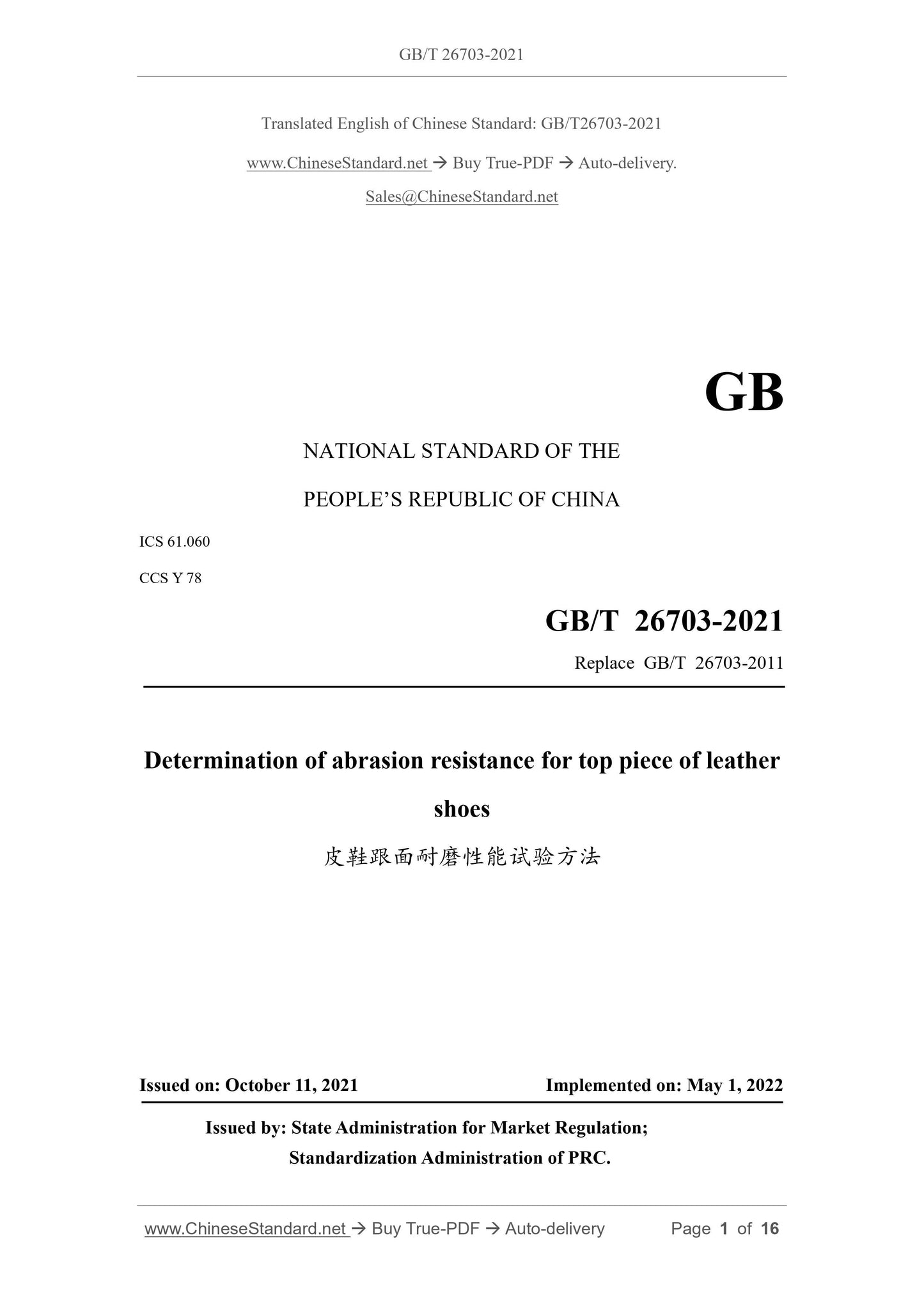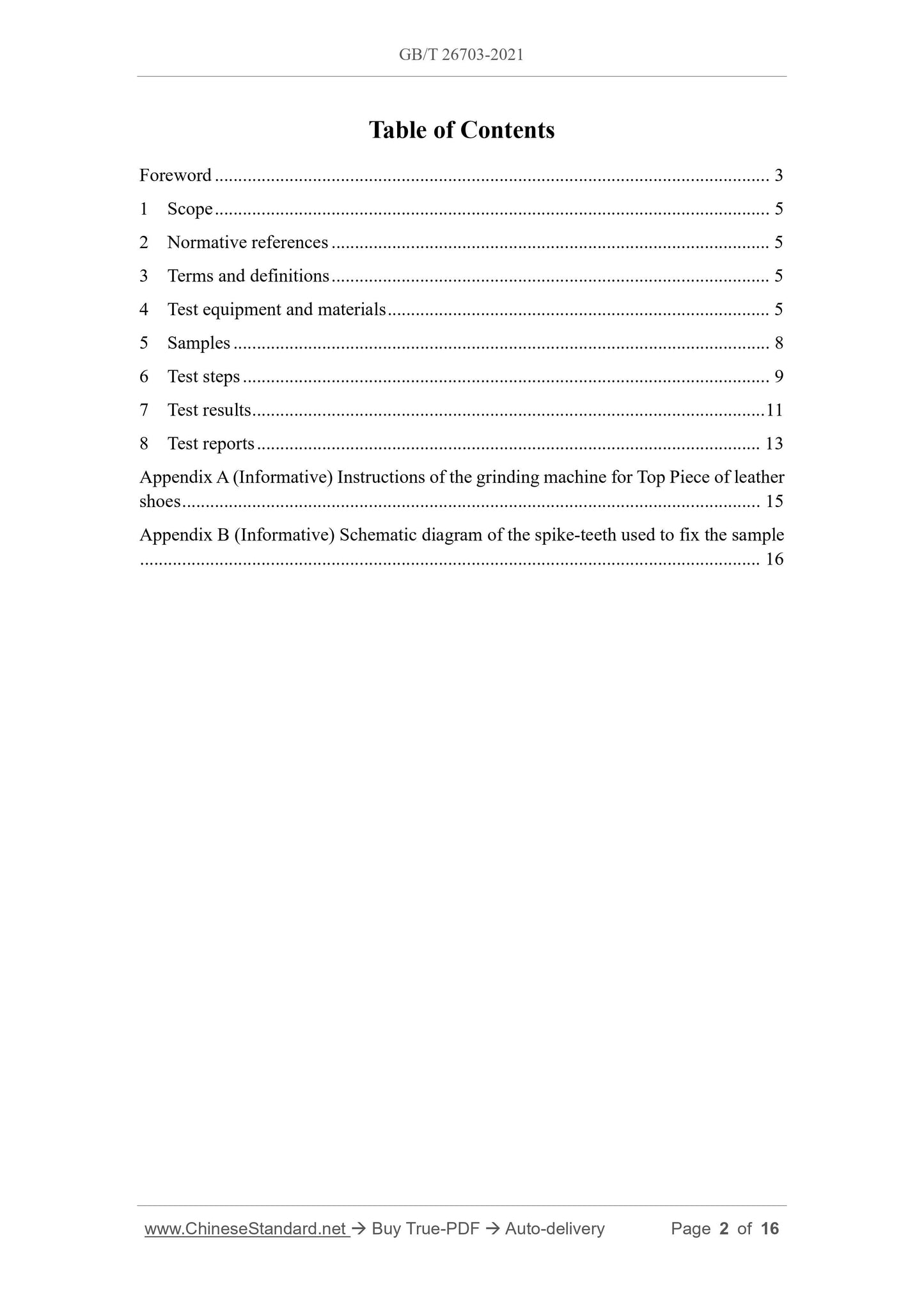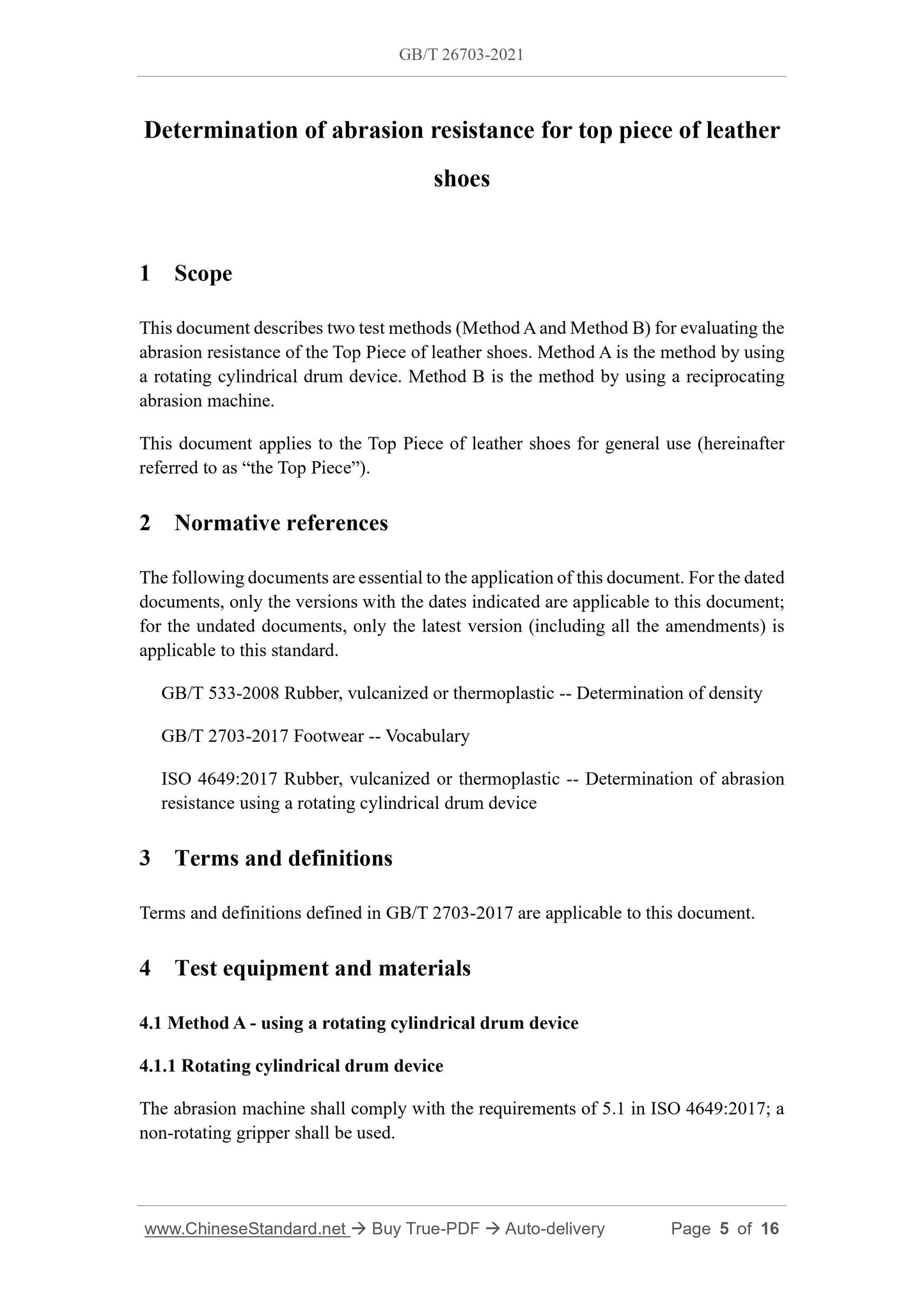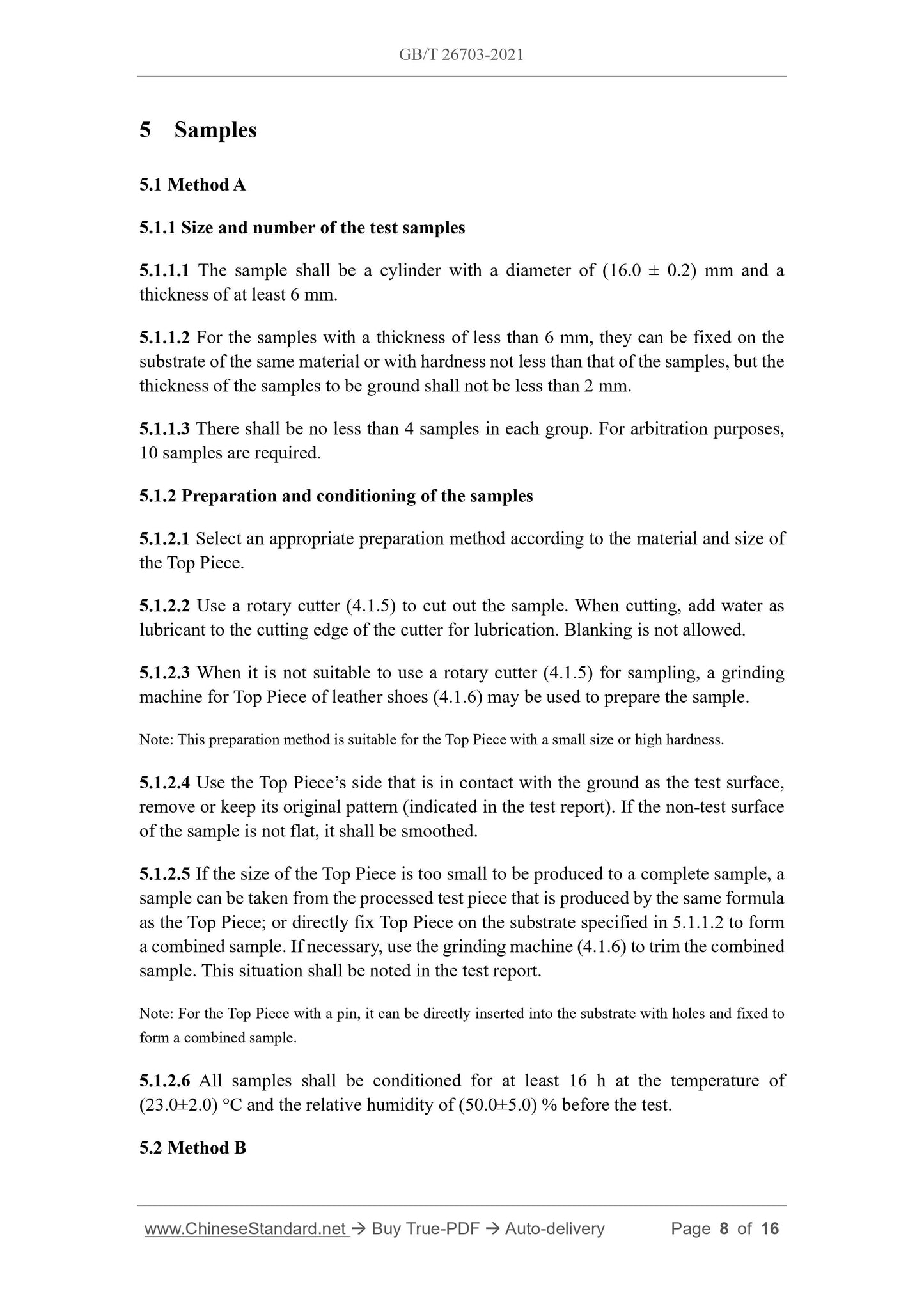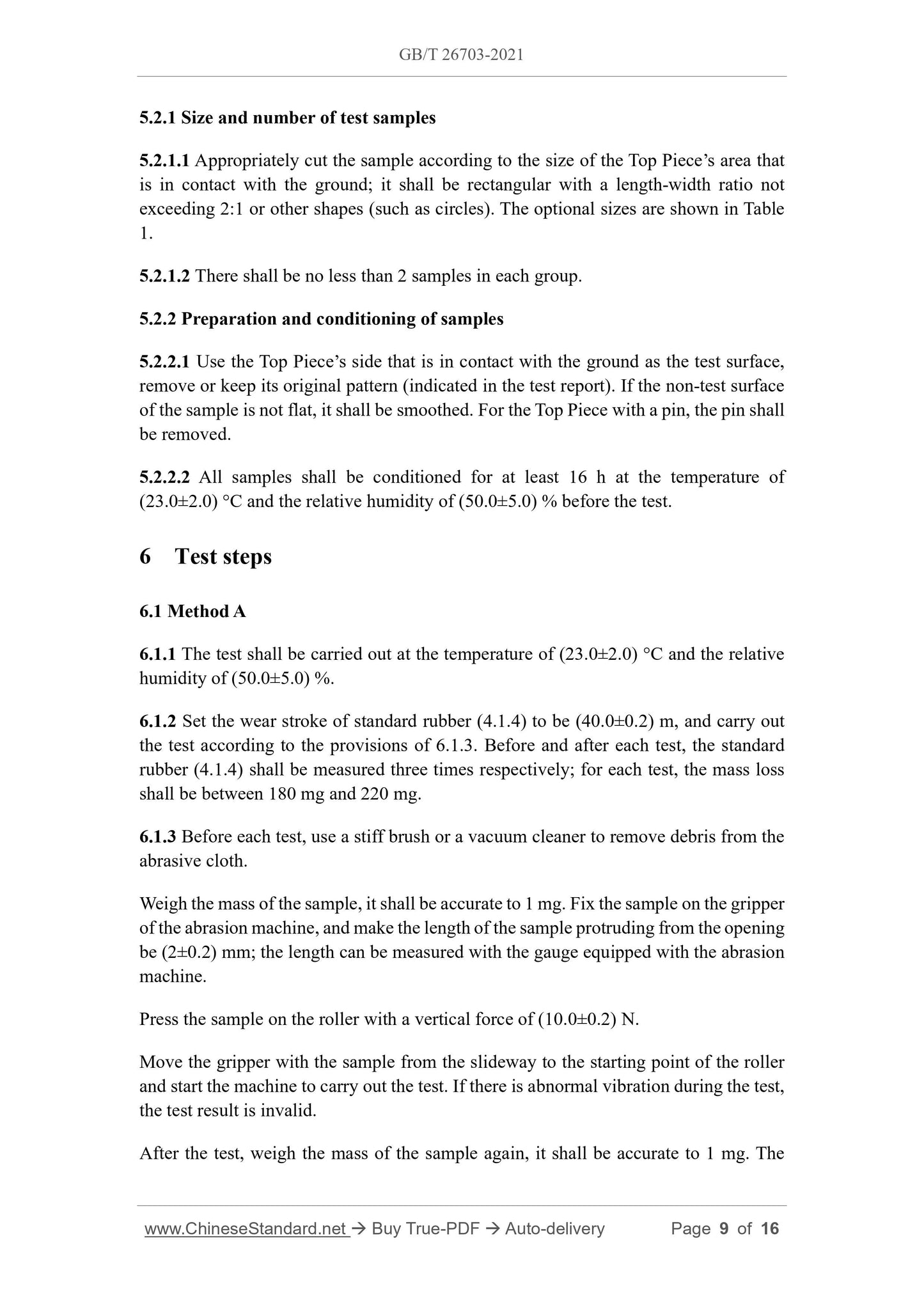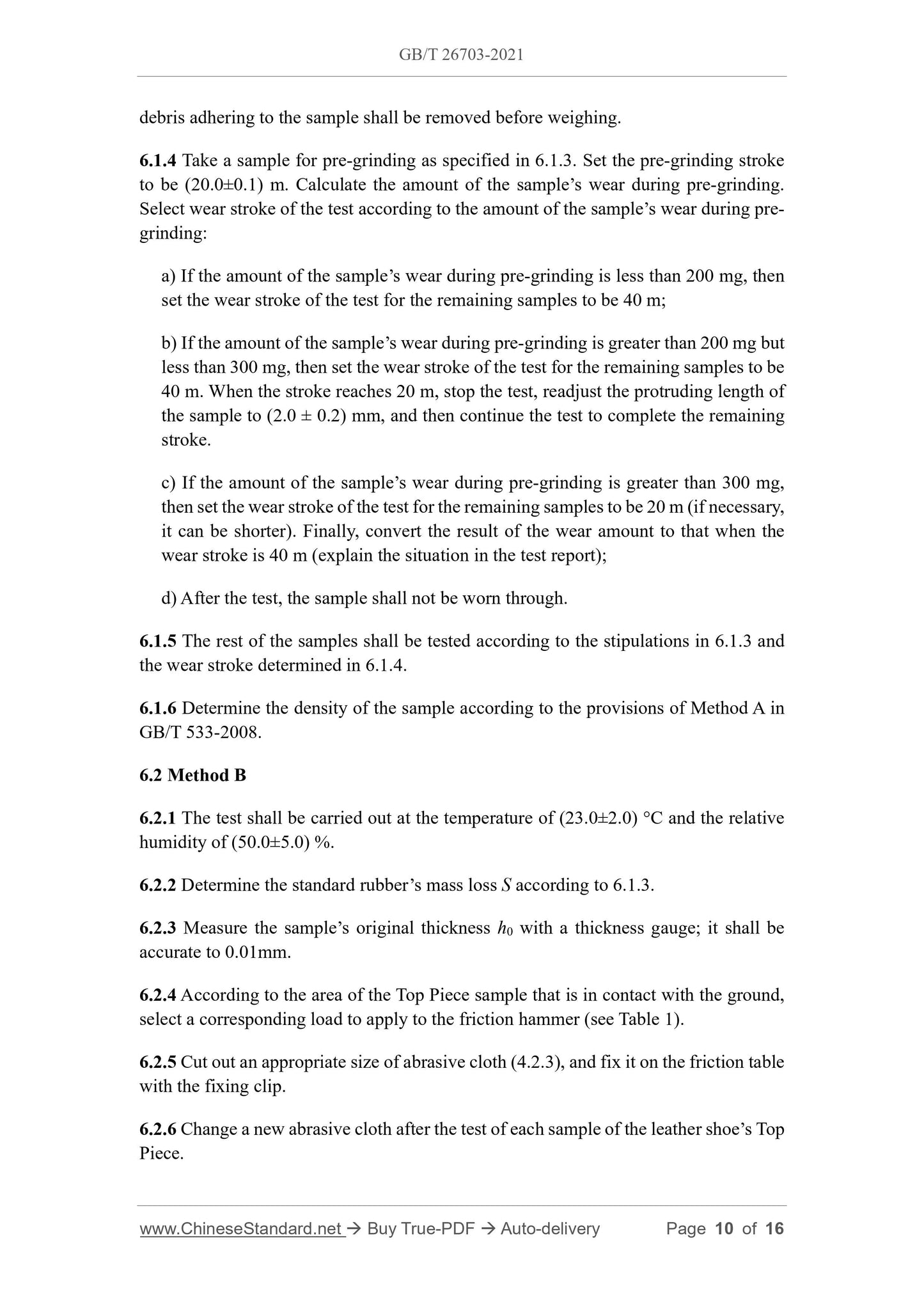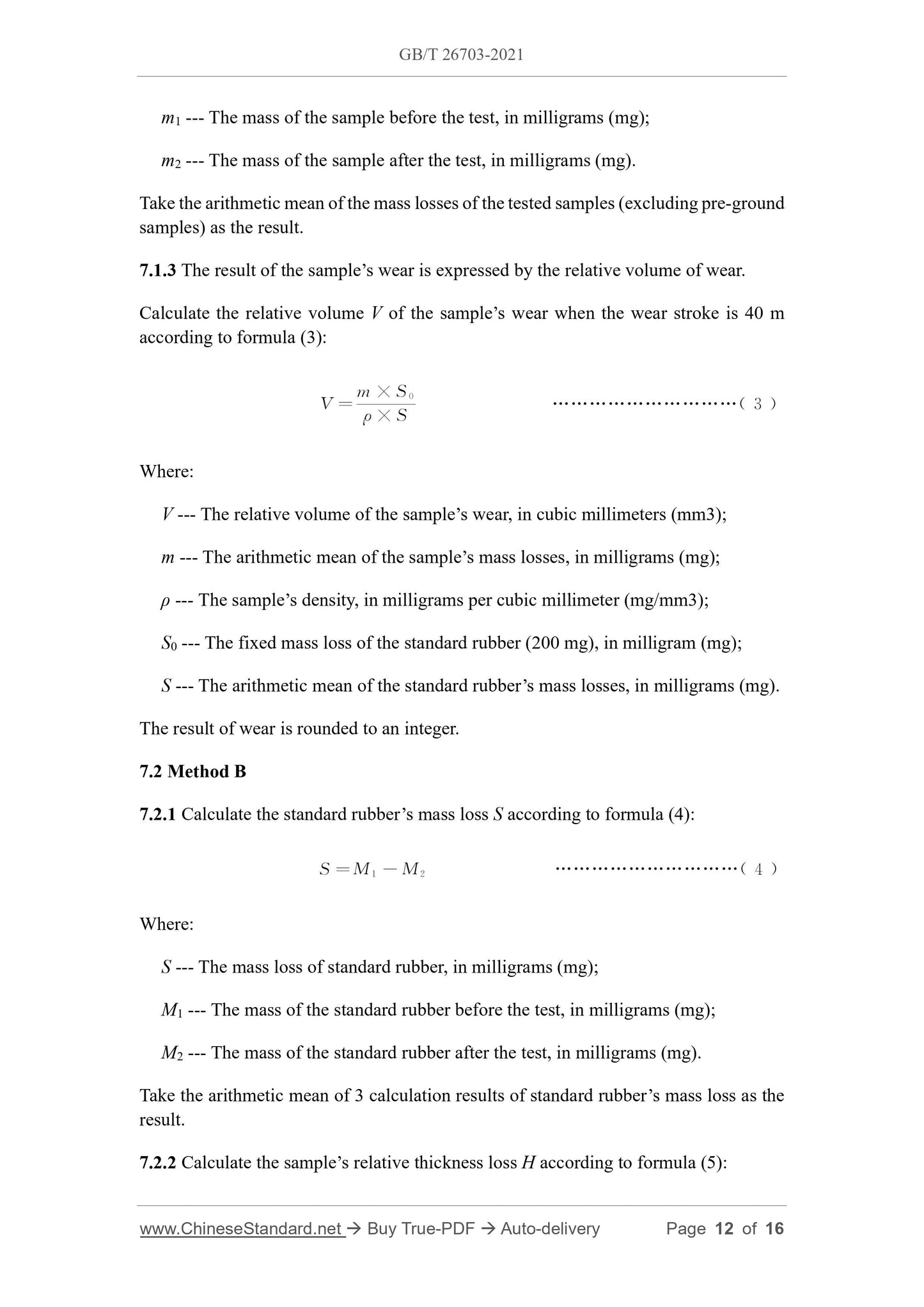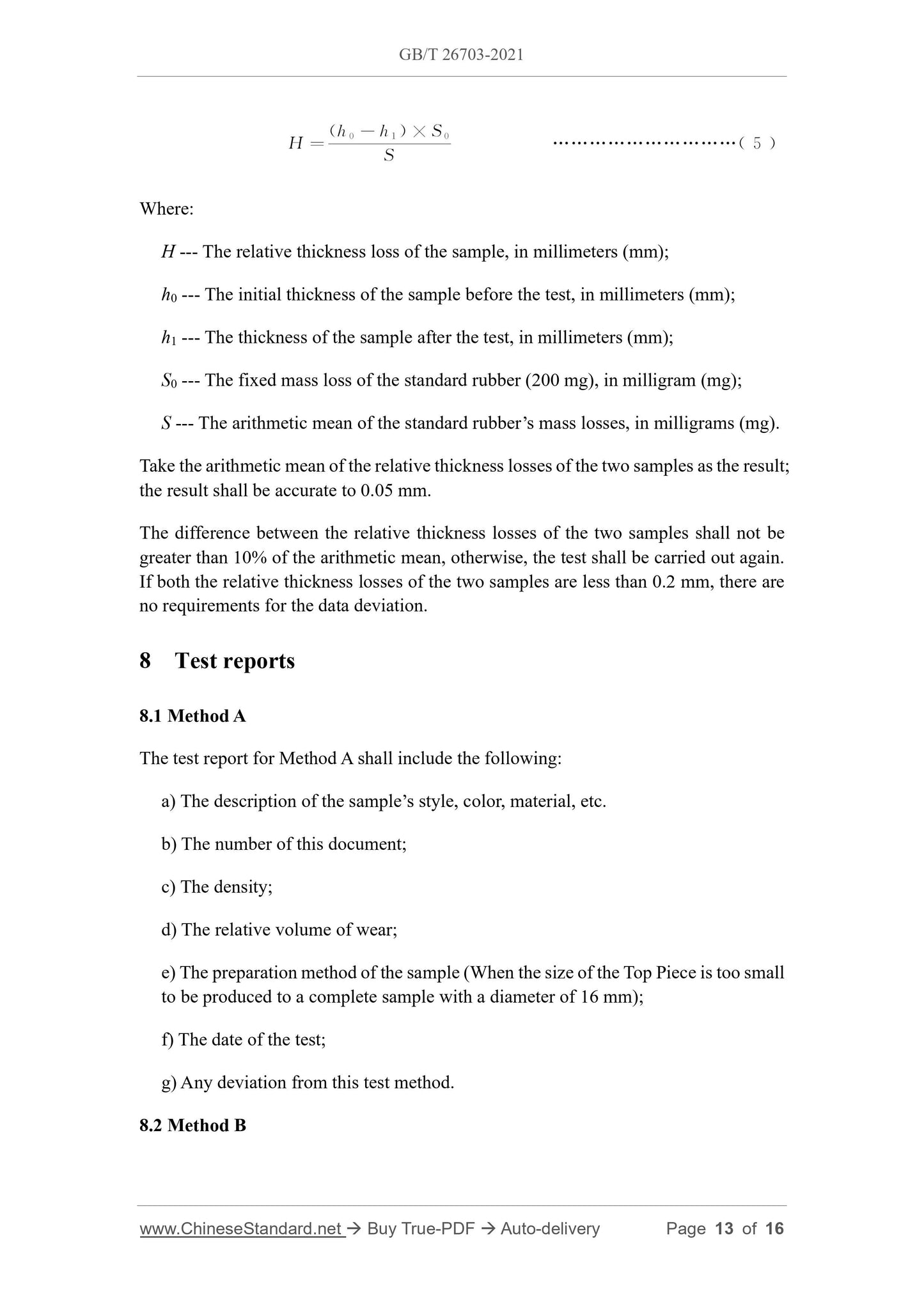1
/
of
8
www.ChineseStandard.us -- Field Test Asia Pte. Ltd.
GB/T 26703-2021 English PDF (GB/T26703-2021)
GB/T 26703-2021 English PDF (GB/T26703-2021)
Regular price
$185.00
Regular price
Sale price
$185.00
Unit price
/
per
Shipping calculated at checkout.
Couldn't load pickup availability
GB/T 26703-2021: Determination of abrasion resistance for top piece of leather shoes
Delivery: 9 seconds. Download (and Email) true-PDF + Invoice.Get Quotation: Click GB/T 26703-2021 (Self-service in 1-minute)
Newer / historical versions: GB/T 26703-2021
Preview True-PDF
Scope
This document describes two test methods (Method A and Method B) for evaluating theabrasion resistance of the Top Piece of leather shoes. Method A is the method by using
a rotating cylindrical drum device. Method B is the method by using a reciprocating
abrasion machine.
This document applies to the Top Piece of leather shoes for general use (hereinafter
referred to as “the Top Piece”).
Basic Data
| Standard ID | GB/T 26703-2021 (GB/T26703-2021) |
| Description (Translated English) | Determination of abrasion resistance for top piece of leather shoes |
| Sector / Industry | National Standard (Recommended) |
| Classification of Chinese Standard | Y78 |
| Word Count Estimation | 10,124 |
| Issuing agency(ies) | State Administration for Market Regulation, China National Standardization Administration |
Share
